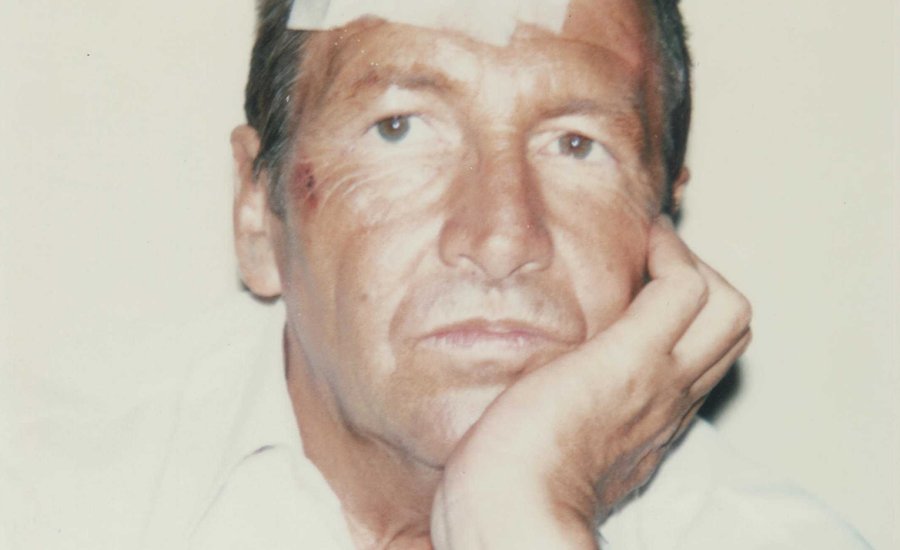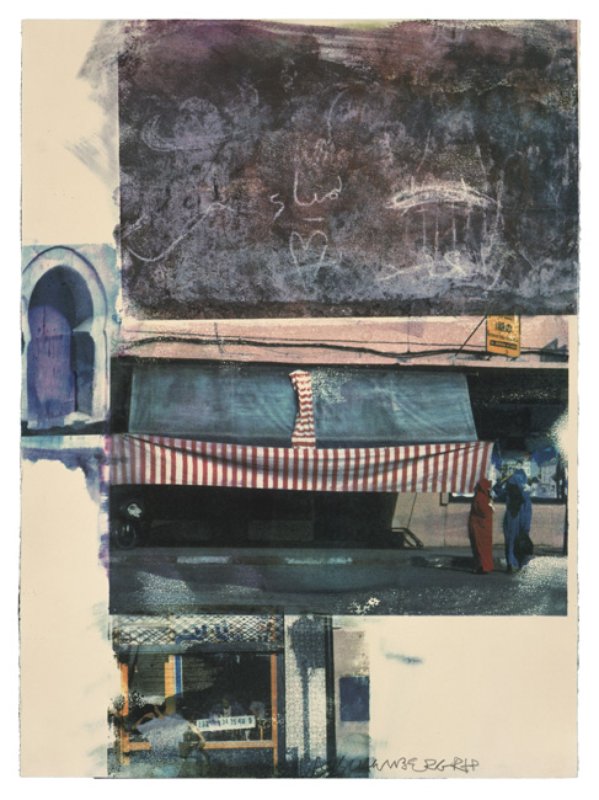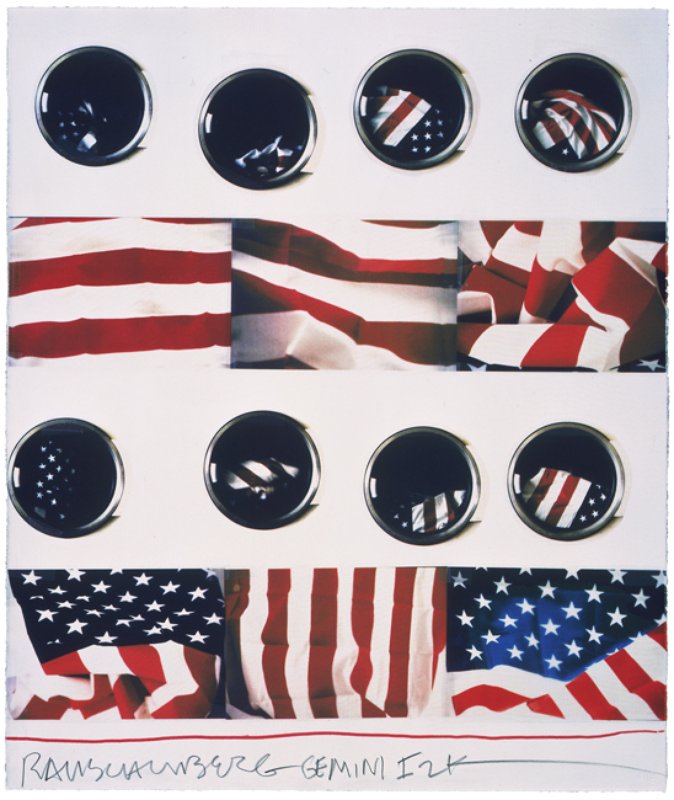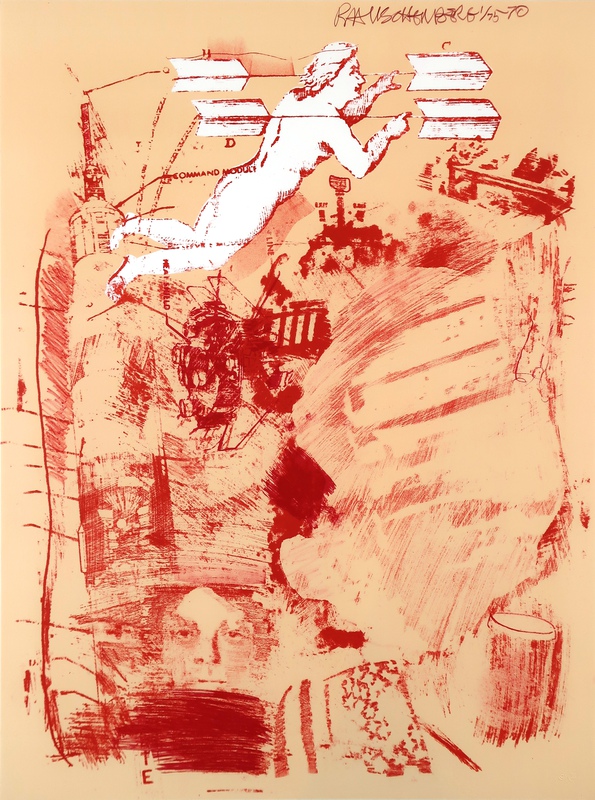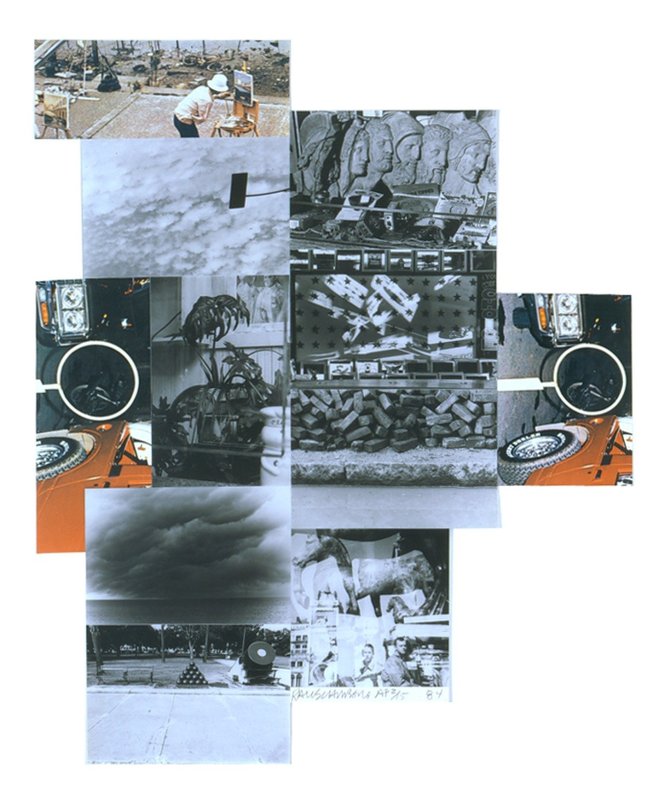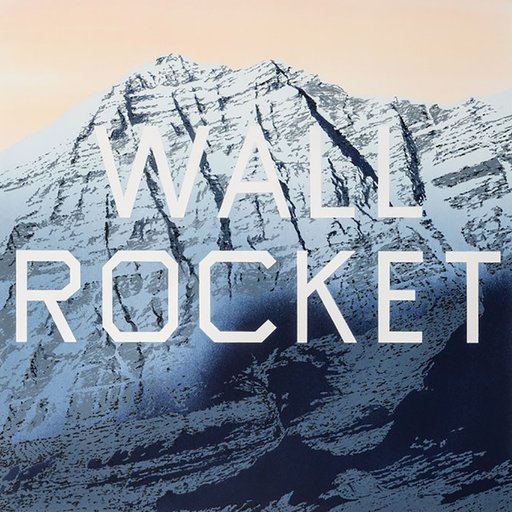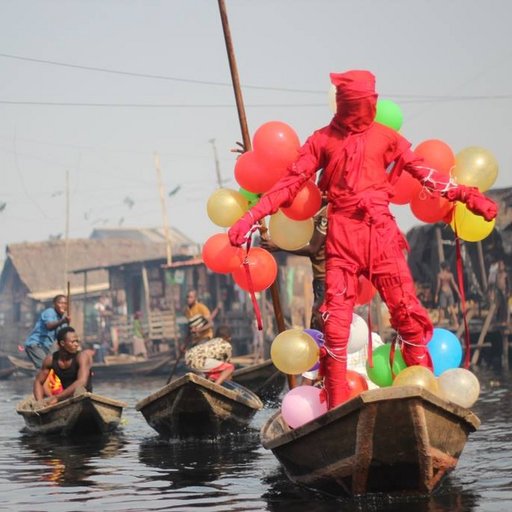Opening May 21, the Museum of Modern Art's retrospective of Robert Rauschenberg, "Among Friends," presents over 250 works spanning six decades of the artist's canonical career. Rauschenberg's developments have been responsible for advancing entire movements within the arts, and have spanned the mediums of painting, photography, performance, dance, and, of course, mixed media. Excerpted from Phaidon's monograph, Robert Rauschenberg, these highlights survey only a few of the innovations made by the artist whom Jasper Johns claimed "invented the most since Picasso."
...
White, Black, and Red Paintings Robert Rauschenberg, White Painting (Seven Panel), 1951
Robert Rauschenberg, White Painting (Seven Panel), 1951
Rauschenberg explained the White Paintings as hypersensitive surfaces that registered changes in their surroundings. This new emphasis encouraged viewers to attend to phenomena ordinarily ignored when looking at a painting, such as the play of shadows across its surface. Rauschenberg's new conception of the White Paintings as ever-changing yet ever-pure, reflecting their environment rather than the feelings of the artist, can be connected not only to his careful observation of these works over time, but also to his growing friendship with John Cage.
Rauschenberg followed the White Paintings with the Black Paintings. Some of them were dark twins of the white works, matte and smooth, but in most he collaged pieces of newspapers to the canvas and painted over them. In a few cases, he used a glossy enamel that caught the light, resulting in glinting reflections across the paintings' darkened, ragged surfaces. These highlights would shift with the viewer's movement, their flickering instability belying the sombre monumentality conjured by expanses of blackness.
RELATED: Color Theory 101: How to Perfectly Pair Artworks in Your Home Using the Color Wheel
After a series of experiments, Rauschenberg returned to painting with renewed conviction, making a series of explosively vibrant red compositions that cemented his reputation as the art world's enfant terrible. As he had done in the Black Paintings, Rauschenberg collaged pieces of newspaper to his canvases and painted over them. However, he approached the task with a new vigor, injecting a note of lively humor by including the colored panels of comic strips, and his handling of paint—which on occasion extended to red nail polish—became more forceful and varied, with dripping brushstrokes common. Most of the Red Paintings are structurally rather conservative, with squares of newspaper and fabric mimicking painting's usual supports of paper and canvas. This underlying grid stabilizes the potentially chaotic collision of textures and closely keyed colors by holding them in a syncopated tension: no single portion of a Red Painting dominates, although close scrutiny yields a wealth of sensuous detail, as if Rauschenberg was at last discovering a way to express the passion for painting that had animated his earliest efforts.
Photography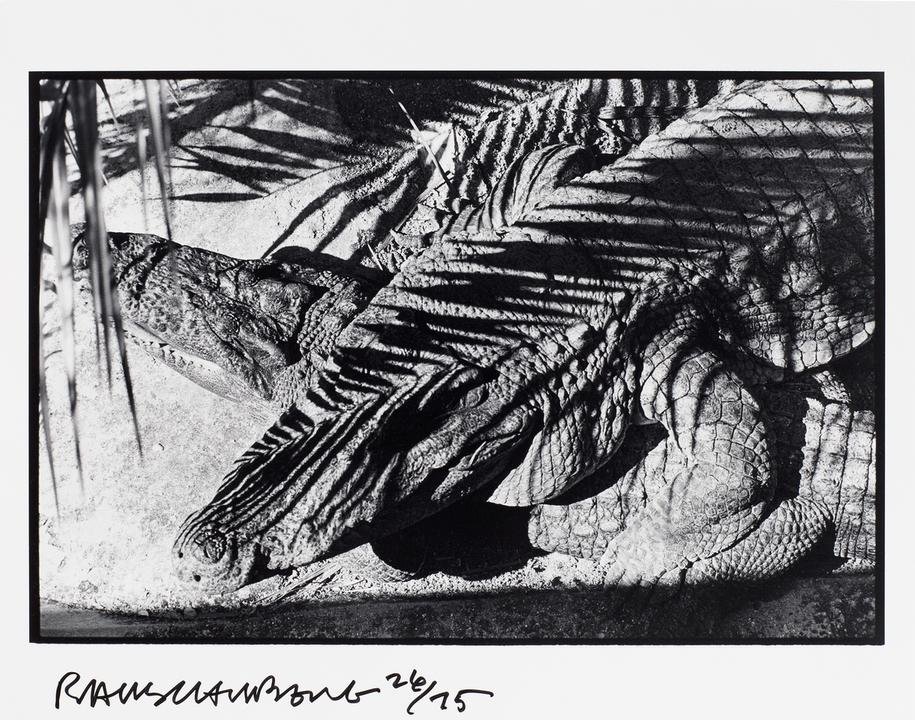 Rauschenberg's Untitled, Ft. Myers, 1979/1991 is available on Artspace for $2,000
Rauschenberg's Untitled, Ft. Myers, 1979/1991 is available on Artspace for $2,000
Rauschenberg's interest in photography took root at Black Mountain College, where several prominent figures in the field, including Aaron Siskind and Harry Callahan, taught during his time there. He took classes with Hazel Larsen Archer and developed such an enthusiasm for the process that for a time it rivalled painting as his primary pursuit. In 1952, the Museum of Modern Art would aquire two of his photographs, his first works to enter a public collection.
Richly modulated in tones of black and white that paralleled his inclinations in painting, Rauschenberg's photographs betrayed a fascination with symmetry that would soon become pronounced in the White Paintings and Black Paintings.
The process of taking a photograph by lining up a particular scene in the camera's viewfinder became an important strategy for helping Rauschenberg determine the relation of his art to the world. Photography came to function for Rauschenberg as much as drawing did for other artists: a way of recording impressions but also means of structuring reality that would provide a foundation for his audacious conception of art.
Erased de Kooning Drawing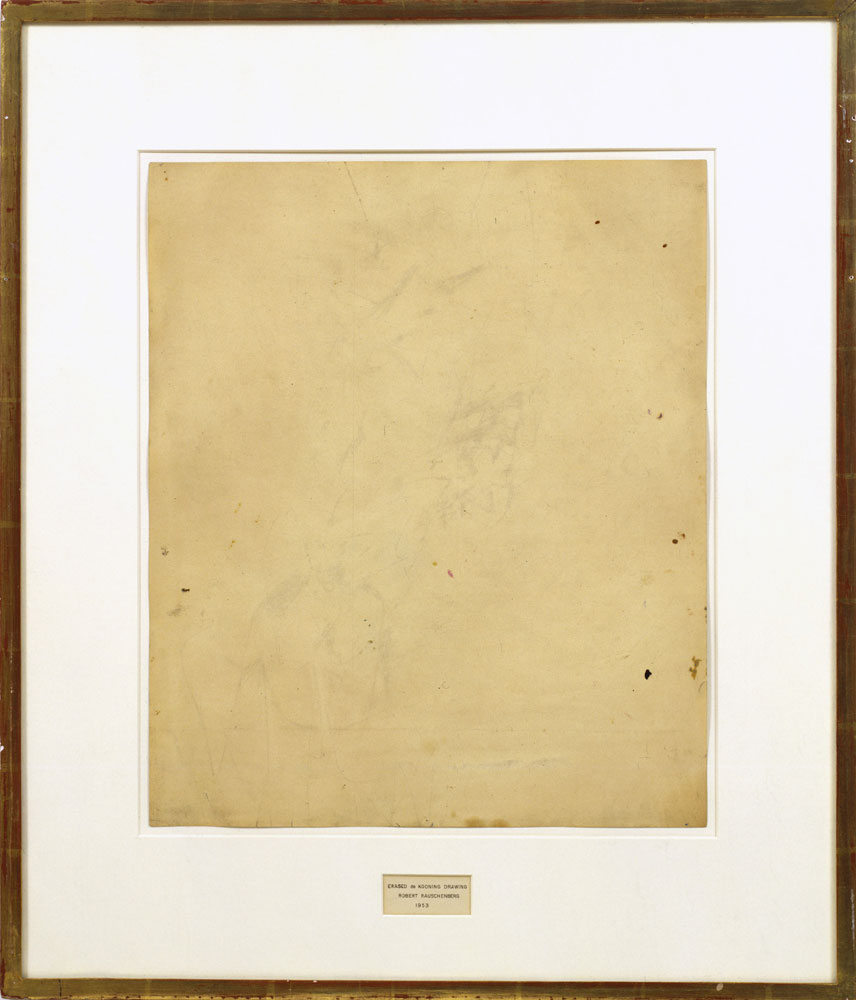 Rauschenberg, Erased de Kooning Drawing, 1953
Rauschenberg, Erased de Kooning Drawing, 1953
In the midst of an experimental period during which he made paintings from such materials as gold leaf, toilet paper, and dirt, Rauschenberg asked himself whether a drawing might be made from erasing. At first, he tried erasing what he had drawn, but this was not satisfying, and he decided that he needed a drawing that was inarguably a work of art. He went to the painter Willem de Kooning, explained his project, and asked him for a drawing to erase. Initially reluctant, de Kooning soon agreed, going through stacks of drawings to find one with a combination of media that would be difficult to erase.
Several weeks and many erasers later, Rauschenberg had completed his task. The sheet of paper, with ghostly traces of the image remaining, was subsequently matted and framed with a small label that reads: "Erased de Kooning Drawing—Robert Rauschenberg—1953." A peculiar and aggressive homage, it took de Kooning's own methods to such extremes that it ended up eradicating its source: this was supreme irony.
Combines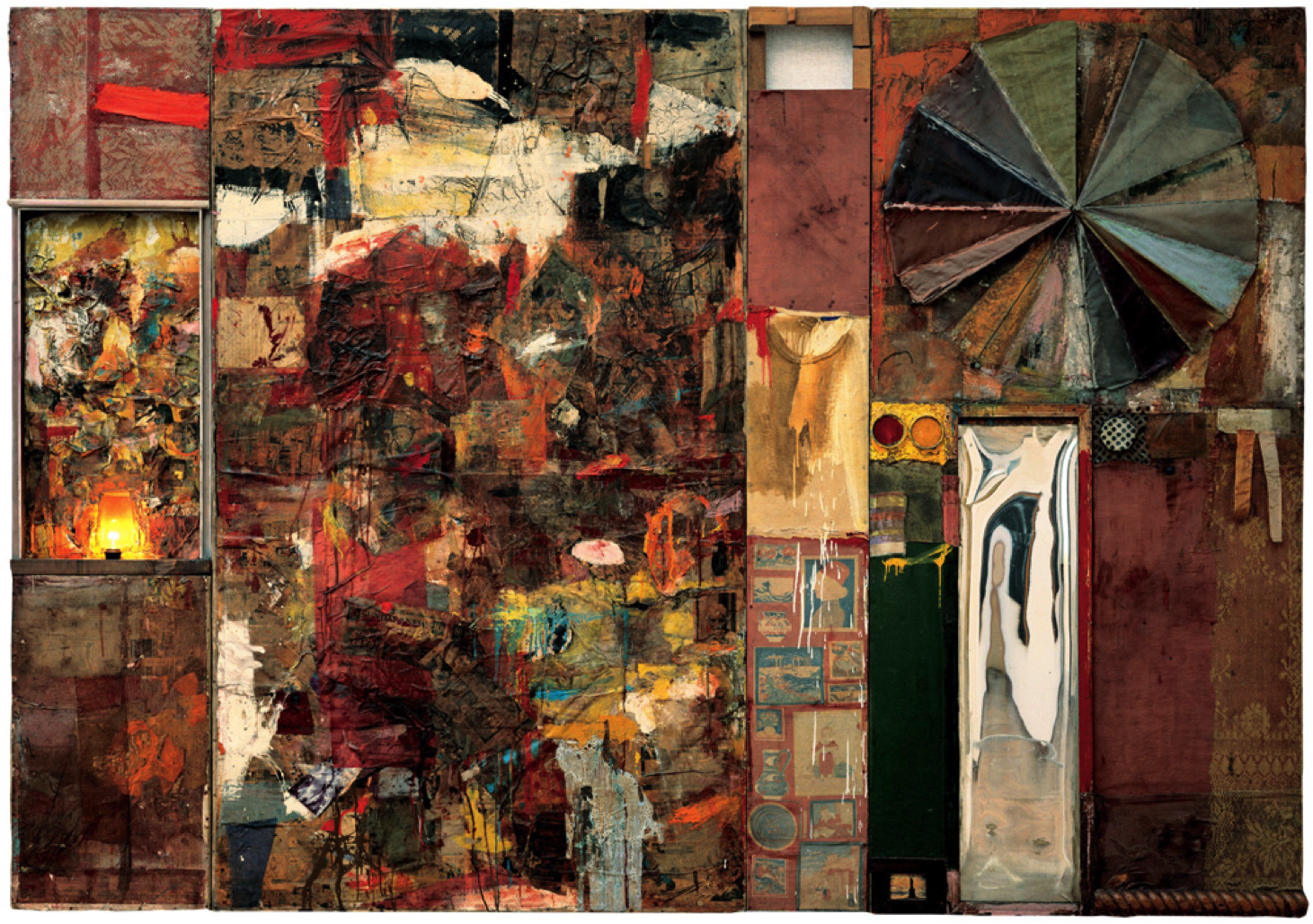 Rauschenberg, Charlene, 1954
Rauschenberg, Charlene, 1954
By the summer of 1954, Rauschenberg began to expand the scale and palate of his work. He started buying discounted paint at a local shop, taking whatever was available and turned economic necessity into a strategy to overcome his concerns about color as well as his fear that his love for painting would overwhelm the discipline he had achieved. Rauschenberg used these random tins of paint to work towards what he called "pedestrian color." Punning on "pedestrian," he aimed to recreate the urban stroller's experience of noticing, for example, a red brick building, a green traffic light and a yellow taxi all at once, without attaching special importance to one color over another.
As Rauschenberg worked through 1954, his paintings became emphatic in their physicality, and he soon christened them "Combines." Viewers of Combines might encounter neckties, pin-ups, fragments of gramophone records, or even stuffed birds from a local taxidermy shop. Viewers would also see materials usually considered personal, such as letters and family photographs.
The Combines contained a wealth of items collected from Rauschenberg's surroundings, infusing them with a distinctive sense of place that required a different way of looking. Abstract Expressionist painters commonly spoke of being "in" their work, but as the poet Frank O'Hara observed, the Combines' call to explore their every aspect offered viewers a way to be "in" them as well.
Silkscreen Paintings Rauschenberg's Watermark (1973) is available on Artspace for $4,000
Rauschenberg's Watermark (1973) is available on Artspace for $4,000
Rauschenberg's 1962 introduction to printmaking stimulated his interest in working with photographic imagery. His work with transfer drawings and lithography led him to attempt photosensitizing canvas in order to transfer images to its surface. These attempts failed, but in 1962, he visited Andy Warhol's studio, where Warhol was making paintings using silkscreens. Rauschenberg quickly realized this process would suit his needs.
RELATED: From C-Print to Silver Gelatin: The Ultimate Guide to Photo Prints
Rauschenberg's Silkscreen Paintings share several qualities with the Combines. He used images of athletes, news figures, and dancers, as well as reproductions of works of art and images from science, in juxtapositions generating thematic chains of meaning, and he placed these images in loosely organized grid compositions articulated by passages of paint. But the silkscreen process also changed Rauschenberg's approach to painting. The use of screens allowed him to enlarge images, so he was not restricted to the one-to-one ratio that necessarily limited the scale of this Combines and transfer drawings.
The use of recurring imagery, like President John F. Kennedy, magnifies a crucial question posed by the Silkscreen Paintings: how images convey meaning. The collage components of the Combines perform this function through their relation to other elements in a given composition and their identity in the world outside the work of art. In the Silkscreen Paintings, a third element complicates matters. With Rauschenberg often working on multiple paintings simultaneously, the same images appeared from one work to the next alongside other, different images. Thus Kennedy's presence suggests different meanings from painting to painting, ranging from associations with the space program and American culture, to intimations of divine authority, depending on what has been juxtaposed with it. The range of potential meanings multiplied as screens were used over and over, with the resulting works becoming analogies of what Rauschenberg described as the "extremely complex random order" of daily life.
Performance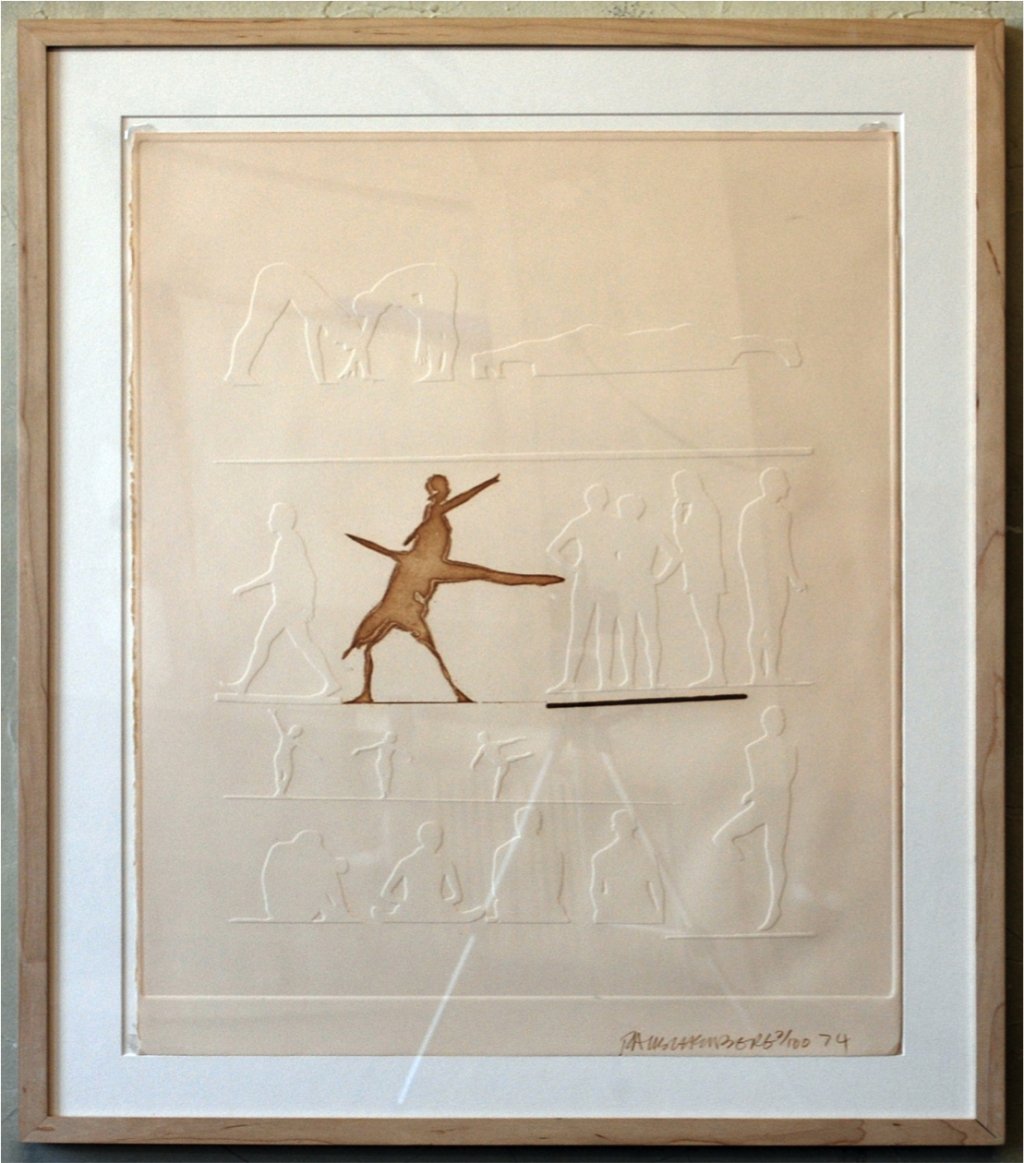 Rauschenberg's Cunningham Relief (1974) is available on Artspace
Rauschenberg's Cunningham Relief (1974) is available on Artspace
Rauschenberg had been enamored with theater and dance since childhood, and his friendship with choreographer Merce Cunningham, John Cage's companion, brought him into contact with dancers. From the 1950s to the 1960s, he regularly created sets, lights, and costumes for Cunningham's company.
In the 1960s, Rauschenberg's own performance pieces further sharpened his desire to create a changing work of art responsive to the viewer's presence. His first performances grew out of the Combines. In 1961, he participated in a concert during which he worked onstage on First Time Painting, only its back was visible to the audience, whose members instead heard sounds picked up by contact microphones as he worked.
RELATED: Merce Cunningham Trust's Trevor Carlson on the Choreographer's Legacy
Rauschenberg became involved with a group of dancers and artists—including Steve Paxton, Lucinda Childs, Yvonne Rainer, and Robert Morris—known as the Judson Dance Theater. Their performances were typified by an attention to everyday movements and often involved tasks that unfolded in real time. Rauschenberg's pieces were characterized by bold, indelible images, often centered on dancers' interactions with objects that might have formerly found their way into his Combines.
Return to Painting and Photography Rauschenberg's Rookery Mounds—Gray Garden (1979) is available on Artspace for $15–20,000
Rauschenberg's Rookery Mounds—Gray Garden (1979) is available on Artspace for $15–20,000
With preparations underway for a retrospective scheduled to open in Washington, DC in 1976, Rauschenberg returned to painting. The resulting works incorporated fabric, transferred photographs, and two-dimensional materials, including cardboard pieces and screen doors, into expansive compositions called Spreads, the Texan term for a large piece of land. The Spreads revisit strategies used in the Combine Paintings, but with solvent-transferred images largely replacing actual objects.
Perhaps as a consequence of the sweeping presentation of his work for the 1976 retrospective, Rauschenberg began to think in terms of larger projects. In 1978, he had an idea for an exhibition of his work that would travel the globe, and three years later started The 1/4 Miles or 2 Furlong Piece, arguably the largest contemporary artwork in the world. Rauschenberg conceived it as a diaristic project that he could turn to whenever the mood struck him, and it would intermittently claim his attention over the next two decades.
Photography regained a central placed in Rauschenberg's work around 1980. He had not practiced photography intensively for years, but he reconnected with it when he took photographs for the backdrop of Trisha Brown's 1979 dance Glacial Decoy. In the years to come, Rauschenberg would use his photographs in printmaking projects and transfer their images to his paintings and sculptures.
At about the same time, he settled a lawsuit with a photographer alleging copyright violation for Rauschenberg's incorporation of his photographs into his art. This experience led Rauschenberg to abandon the use of such photographs (ironically, just as he was receiving recognition for his relevance to postmodern artists, such as Sherrie Levine, who worked with appropriated images). From 1980 onwards, he employed his own photographs almost exclusively in his art, resulting in more of a closed circuit of imagery.
Rauschenberg's Legacy Rauschenberg's Residence (Speculations) (1997) is available on Artspace for $10,000
Rauschenberg's Residence (Speculations) (1997) is available on Artspace for $10,000
Jasper Johns once commented that Rauschenberg was the artist who had invented the most since Pablo Picasso. As with Picasso, the sheer extent of Rauschenberg's influence makes it difficult to track. One measure of his significance is the fact that he affected so many different types of artists, starting with Johns himself. The White Paintings and other early works set important precedents for Minimalism and Conceptual Art, while his erasure of de Kooning's drawing and the ironic critiques of self-expression and originality characterizing many of the Combines signaled the dawn of postmodernism before such a term even existed. The Pop Artists' embrace of consumer goods, Allan Kaprow's Happenings, Fluxus, and more recently, the mixed media work of artists such as Isa Genzken are difficult to imagine without Rauschenberg's example. The impact of his lifelong concern with environmental issues is just beginning to be appreciated.
RELATED: The Intellectual Origins of Minimalism
Above all, Rauschenberg's wit, ingenuity, resourcefulness, and unceasing faith in art and life, as an arena for imagination and inventiveness, inspired artists and viewers alive. The art world responded to his passing on May 12, 2008 with a profound and affectionate display of mourning that was as much a celebration of his spirit as it was of his art. Rauschenberg's exuberance, his openness and his generosity provided a new way for artists to be in the world and still be artists.
[related-works-module]











